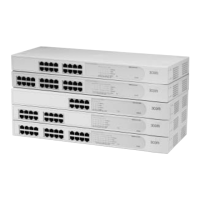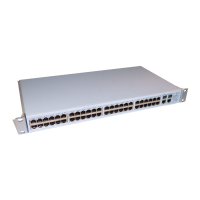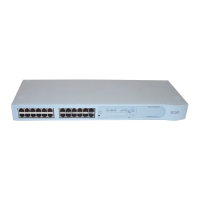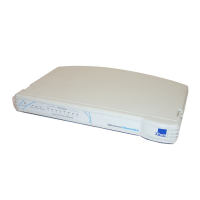APPENDIX F: GLOSSARY
214
RADIUS is a logon authentication protocol that uses software running
on a central server to control access to RADIUS-compliant devices on
the network.
RMON provides comprehensive network monitoring capabilities. It
eliminates the polling required in standard SNMP, and can set alarms
on a variety of traffic conditions, including specific error types.
RSTP reduces the convergence time for network topology changes to
about 10% of that required by the older IEEE 802.1D STP standard.
A secure replacement for remote access functions, including Telnet.
SSH can authenticate users with a cryptographic key, and encrypt data
connections between management clients and the switch.
The RIP protocol seeks to find the shortest route to another device by
minimizing the distance-vector, or hop count, which serves as a rough
estimate of transmission cost. RIP-2 is a compatible upgrade to RIP. It
adds useful capabilities for subnet routing, authentication, and
multicast transmissions.
The application protocol in the Internet suite of protocols which offers
network management services.
Remote
Authentication
Dial-in User Service
(RADIUS)
Remote Monitoring
(RMON)
Rapid Spanning Tree
Protocol (RSTP)
Secure Shell (SSH)
Routing Information
Protocol (RIP)
Simple Network
Management
Protocol (SNMP)
Protected Extensible
Authentication
Protocol (PEAP)
A protocol proposed by Microsoft, Cisco and RSA Security for securely
transporting authentication data, including passwords, over 802.11
wireless networks. Like the competing standard Tunneled Transport
Layer Security (TTLS), PEAP makes it possible to authenticate wireless
LAN clients without requiring them to have certificates, simplifying the
architecture of secure wireless LANs.Protocol-Independent
Multicasting (PIM)
This multicast routing protocol floods multicast traffic downstream,
and calculates the shortest-path back to the multicast source network
via reverse path forwarding. PIM uses the router’s IP routing table
rather than maintaining a separate multicast routing table as with
DVMRP. PIM - Sparse Mode is designed for networks where the
probability of a multicast client is low, such as on a Wide Area
Network. PIM – Dense Mode is designed for networks where the
probability of a multicast client is high and frequent flooding of
multicast traffic can be justified.

